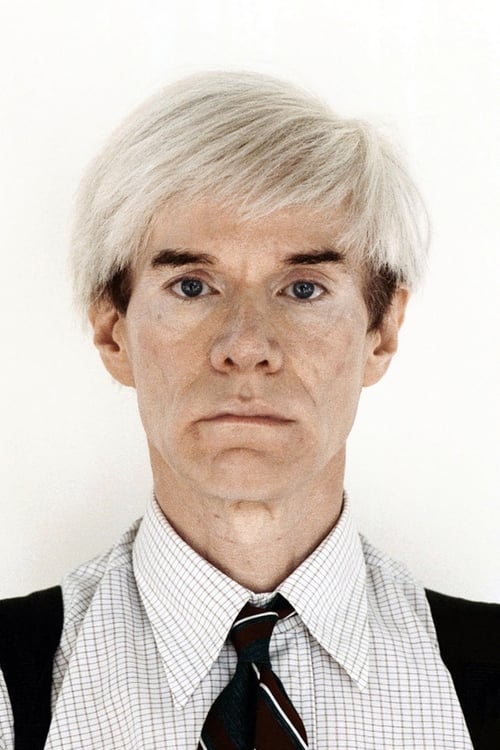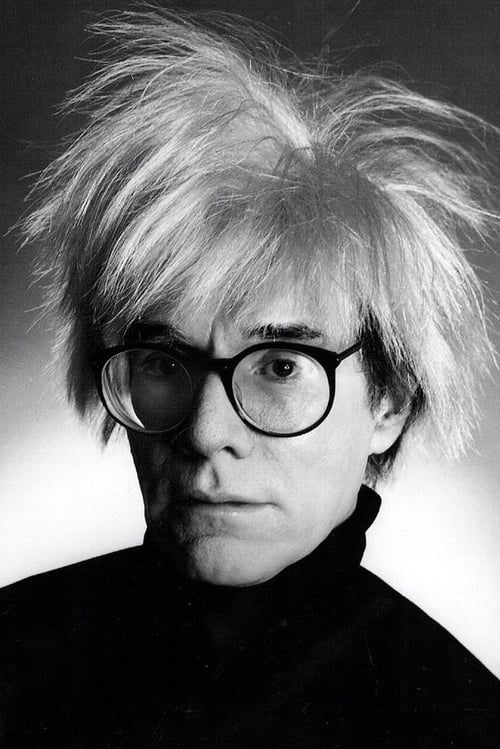
Self (archive footage)
The quixotic journey of Nam June Paik, one of the most famous Asian artists of the 20th century, who revolutionized the use of technology as an artistic canvas and prophesied both the fascist tendencies and intercultural understanding that would arise from the interconnected metaverse of today's world.

Self (Archival Footage)
Mickey Mouse is one of the most enduring symbols in our history. Those three simple circles take on meaning for virtually everyone on the planet. So ubiquitous in our lives that he can seem invisible, Mickey is something we all share, with unique memories and feelings. Over the course of his nearly century-long history, Mickey functions like a mirror, reflecting our personal and cultural values back at us. "Mickey: The Story of a Mouse" explores Mickey's significance, getting to the core of what Mickey's cultural impact says about each of us and about our world.
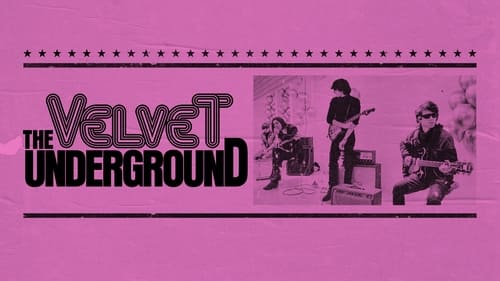
Self (archive footage)
Experience the iconic rock band's legacy in the first major documentary to tell their story. Directed with the era’s avant-garde spirit by Todd Haynes, this kaleidoscopic oral history combines exclusive interviews with dazzling archival footage.
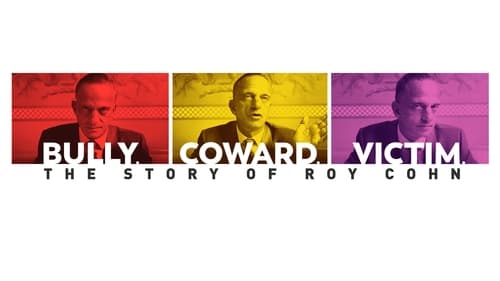
Self (archive footage)
Legendary and controversial attorney Roy Cohn was a power broker in the rough and tumble world of New York City business and politics. Senator Joseph R. McCarthy’s top counsel during investigations into Communist activities in the 1950s, Cohn is also known for being Donald Trump’s former personal lawyer, fixer and mentor. Focusing on key periods of his life, and drawing on extensive, newly unearthed archival material, a new documentary on Cohn’s life will debut on HBO in 2019.

Self (archive footage)
From Iowa to Studio 54, this investigation into the rags-to-riches story of America’s first superstar designer uncovers the cautionary tale of an artist who sold his name to Wall Street.
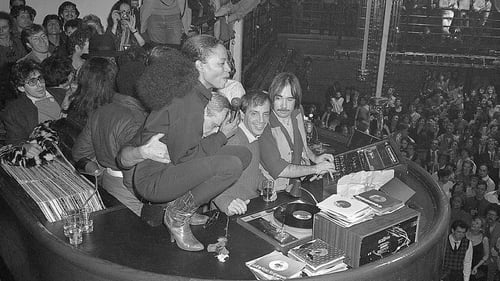
Self (archive footage)
Studio 54 was the epicenter of 70s hedonism - a place that not only redefined the nightclub, but also came to symbolize an entire era. Its co-owners, Ian Schrager and Steve Rubell, two friends from Brooklyn, seemed to come out of nowhere to suddenly preside over a new kind of New York society. Now, 39 years after the velvet rope was first slung across the club's hallowed threshold, a feature documentary tells the real story behind the greatest club of all time.
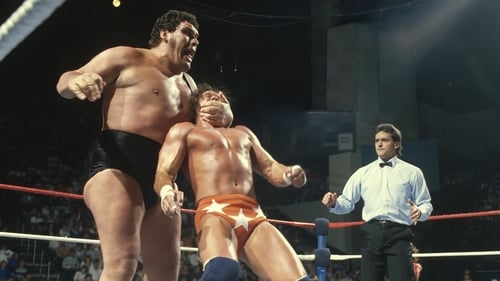
Self (archive footage)
An ambitious and wide-ranging documentary exploring Andre’s upbringing in France, his celebrated career in WWE, and his forays in the entertainment world.

Self (archive footage)
In a hypercompetitive world, drugs like Adderall offer students, athletes, coders and others a way to do more -- faster and better. But at what cost?
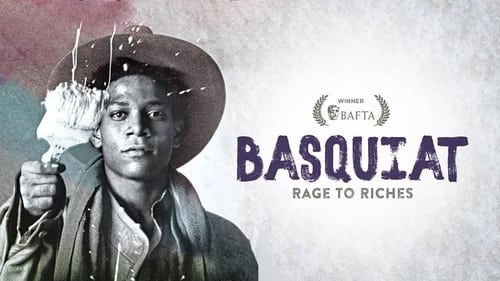
Self (archive footage)
This film tells Jean-Michel's story through exclusive interviews with his two sisters Lisane and Jeanine, who have never before agreed to be interviewed for a TV documentary. With striking candour, Basquiat's art dealers - including Larry Gagosian, Mary Boone and Bruno Bischofberger - as well as his most intimate friends, lovers and fellow artists, expose the cash, the drugs and the pernicious racism which Basquiat confronted on a daily basis. As historical tableaux, visual diaries of defiance or surfaces covered with hidden meanings, Basquiat's art remains the beating heart of this story.
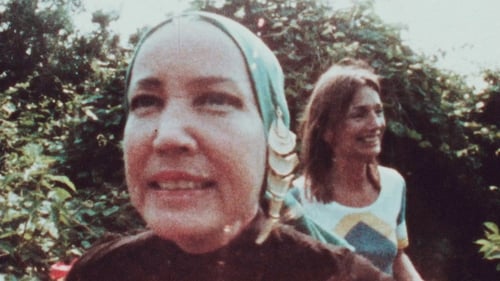
Self (archive footage)
Albert and David Maysles' classic GREY GARDENS immortalized the estate of Edith and Little Edie Beale, relatives of Jacqueline Bouvier Kennedy, who lived in alarmingly poor conditions. But there is more to the story: it was Lee Radziwill and Peter Beard who first brought the Maysles to the Beales, when the two set out to make a film about Radziwill's childhood. The reels of that first contact were shelved for 45 years. This documentary recovers the lost footage. Anchored in Beard's recollections and artistic vision, we are returned to "that summer" in 1972, a seductive dream world and collage of radically unconventional creative personalities—Warhol, Bacon, Jagger, Capote—practicing the art of living amidst oppressive forces of class expectation and prejudice.

Self
In his latest film, Mekas shares what he describes as “a valentine to Yoko Ono,” done in his signature diaristic style. Mixing the familiar 16mm film with DV video, he offers a fly-on-the-wall look at intimate moments spent with one of the foremost artists of that era, including performances by Ono and new footage of her recent work—a testament to her endurance and the friendships she has made and kept over the years.

Self (archive footage)
When Howard Brookner lost his life to AIDS in 1989, the 35-year-old director had completed two feature documentaries and was in post-production on his narrative debut, Bloodhounds of Broadway. Twenty-five years later, his nephew, Aaron, sets out on a quest to find the lost negative of Burroughs: The Movie, his uncle's critically-acclaimed portrait of legendary author William S. Burroughs. When Aaron uncovers Howard's extensive archive in Burroughs’ bunker, it not only revives the film for a new generation, but also opens a vibrant window on New York City’s creative culture from the 1970s and ‘80s, and inspires a wide-ranging exploration of his beloved uncle's legacy.

Self (archive footage)
Warhol Superstar Ultra Violet (Isabelle Colin Dufresne) and Lower East Side Icon Taylor Mead (Poet/Actor/Artist) share their stories of Manhattan in the 1960s.
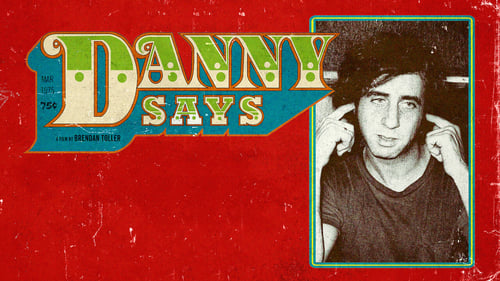
Self (archive footage)
DANNY SAYS is a documentary unveiling the amazing journey of Danny Fields. Fields has played a pivotal role in music and culture with seminal acts including: the Doors, the Velvet Underground, the Stooges, MC5, Nico, the Ramones and beyond.
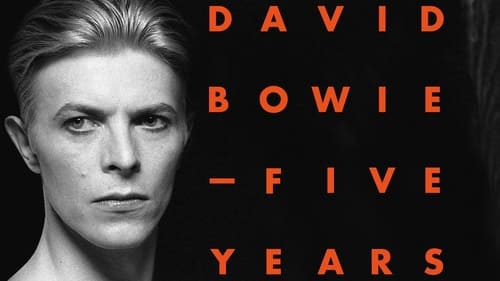
Self (Archival Footage)
Featuring a wealth of previously unseen archive, this film looks at how Bowie continually evolved: from Ziggy Stardust to the Soul Star of Young Americans, to the ‘Thin White Duke’. It explores his regeneration in Berlin with the critically acclaimed album Heroes, his triumph with Scary Monsters and his global success with Let’s Dance. With interviews with all his closest collaborators, David Bowie - Five Years presents a unique account of why Bowie has become an ‘icon of our times’.

Self (archive footage)
A documentary about Anton Perich, brilliant Croatian artist, naturalized New Yorker. He worked as photographer at Andy Warhol's Interview Magazine and has been active member of the Factory since early seventies.
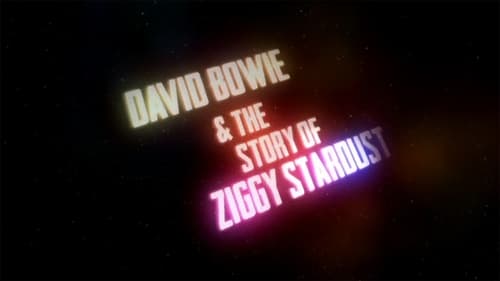
Self (Archival photo)
BBC documentary telling the story of how David Bowie arrived at one of the most iconic creations in pop history - Ziggy Stardust - with contributions from colleagues and famous fans.

Self (archive footage)
An astonishing journey of the images taken by William John Kennedy in the early 60's of Robert Indiana, Andy Warhol with their iconic works.
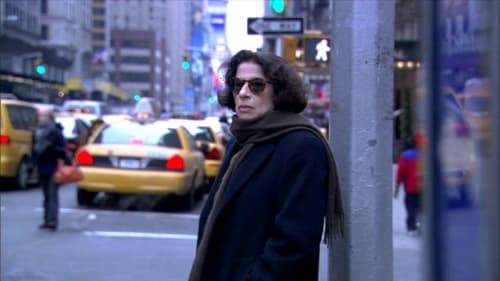
Self (archive footage)
A feature-length documentary starring Fran Lebowitz, a writer known for her unique take on modern life. The film weaves together extemporaneous monologues with archival footage and the effect is a portrait of Fran's worldview and experiences.

Self (archive footage)
A docu-comedy feature film about a once-famous millionaire "business artist" forced to confront his own legendarily obnoxious behavior, while trying to find love through fame.

Self (archive footage)
A riveting and emotional journey into the world of writer William S. Burroughs, a man considered as cold as an iceberg on a winter night.
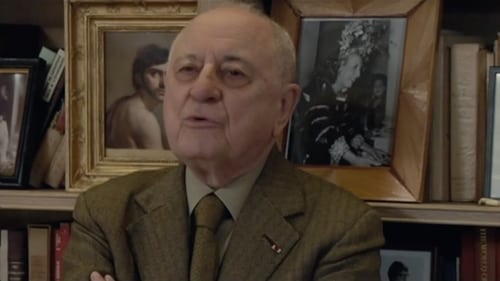
Self (archive footage) (uncredited)
This documentary examines the life and work of the late fashion designer Yves Saint-Laurent, recounting how a frail prodigy prone to bouts of depression became an icon of the fashion world. Initially appointed head of the House of Dior in 1957 before growing into a globally recognized designer in his own right, Saint-Laurent overcomes his struggles with substance abuse, accumulating a large art collection alongside his lifelong personal and professional partner, Pierre Bergé.

Self (archive footage)
James Rasin's documentary “Beautiful Darling” honors American Transgender actress and best-known Warhol Superstar, Candy Darling, and her all-too-brief life and career, with a combination of current and vintage interview material, rarely seen archival photos and footage, and extracts from Darling's movies.

Self (archive footage)
A thoughtful portrait of a renowned artist, this documentary shines the spotlight on New York City painter Jean-Michel Basquiat. Featuring extensive interviews conducted by Basquiat's friend, filmmaker Tamra Davis, the production reveals how he dealt with being a black artist in a predominantly white field. The film also explores Basquiat's rise in the art world, which led to a close relationship with Andy Warhol, and looks at how the young painter coped with acclaim, scrutiny and fame.

Self (archive footage)
Model, film star, muse, socialite, icon. Edie Sedgwick was the very first "it" girl of the Andy Warhol Factory scene. The arc of her life traced the rise and fall of the 1960s recklessness. After being the toasted by the whole of New York City, Edie died alone of a drug overdose in California at the age of 28. She was both the harbinger of celebrity culture and someone who stood entirely outside of it, an artist who painted life, bravely and spontaneously, with her own hand.
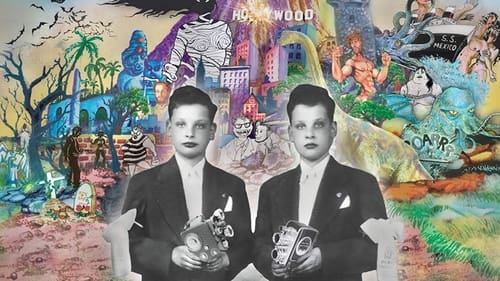
Self (archive footage)
It Came from Kuchar is the definitive, feature documentary about the legendary, underground filmmaking twins, the Kuchar brothers. George and Mike Kuchar have inspired two generations of filmmakers, actors, musicians, and artists with their zany, "no budget" films and with their uniquely enchanting spirits.
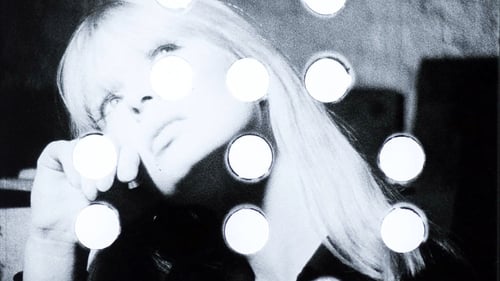
Director
Between 1964 and 1966, Andy Warhol shot nearly 500 Screen Tests, beautiful and revealing portraits of hundreds of different individuals, from Warhol superstars and celebrities to friends or anyone he thought had "star potential". All visitors to his studio, the Factory. Subjects were captured in stark relief by a strong keylight, and filmed by Warhol with his stationary 16mm Bolex camera on silent, black and white, 100-foot rolls of film. The resulting two-and-a-half-minute film reels were then screened in slow motion, resulting in a fascinating collection of four-minute masterpieces that startle and entrance, mesmerizing in the purest sense of the word. Songwriters Dean Wareham and Britta Phillips, formerly of the band Luna and currently recording as Dean & Britta, incorporated original compositions as well as cover songs to create new soundtracks for the 13 films.

The Feature does not reconcile fact and fiction; instead, it blurs the definitions seemingly represented by the film’s two clearly demarcated registers: that of the archival footage and that of the new, theatrical material. In his guise as “Michel Auder,” living a fulsome and extravagant life, replete with beautiful women and a rock-cut pool overlooking Los Angeles, the art world is revealed as a sham, and his character exhibits a repulsive narcissism. And yet, when caught in quiet moments, something poignant emerges—a glimmer of truth that rebels against the entire endeavour. Or maybe, that’s what makes The Feature.

Self (archive footage)
A portrait of New York artist Keith Haring. The film looks to Haring as an artistic role model for his preternatural talent, of course, but also for his infectious lust for life that had him as committed to social activism and teaching children as to his latest painting.

How LA Learned to Love Modern Art. A lesson in how a few renegade artists built an art scene from scratch.
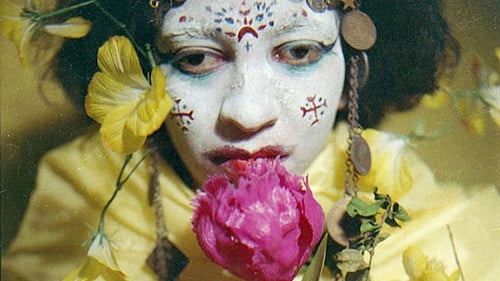
Himself (archive footage)
In this entrancing documentary on performance artist, photographer and underground filmmaker Jack Smith, photographs and rare clips of Smith's performances and films punctuate interviews with artists, critics, friends and foes to create an engaging portrait of the artist. Widely known for his banned queer erotica film Flaming Creatures, Smith was an innovator and firebrand who influenced artists such as Andy Warhol and John Waters.

Andy Warhol
The best and most memorable matches from Hulk Hogan's career.

Himself
Ric Burns unearths rarely seen footage and offers keen observations on the life and artistic influence of Andy Warhol. [Made for and aired on PBS's American Masters series.]

Director
CINEMA16 celebrates the short film by showcasing some of the best classic and award-winning shorts on DVD. With over three hours of films CINEMA16: AMERICAN SHORT FILMS is essential viewing for anyone with an interest in the moving image. Films include Gus Van Sant's 1982 adaptation of a William S. Burroughs short story, The Discipline Of DE, Tim Burton's early stop motion animated classic Vincent, George Lucas' USC short Freiheit, Alexander Payne's previously unreleased UCLA graduation short Carmen, Paperboys by Mike Mills, D.A. Pennebaker's Duke Ellington scored Daybreak Express, Todd Solondz's NYU short Feelings, along with Oscar Winner The Lunch Date by Adam Davidson, Stefan Nadelman's multi- award winning documentary Terminal Bar, Joe Nussbaum's cult classic George Lucas In Love and 2006 Sundance Winner The Wraith Of Cobble Hill by Adam Parrish King. Films are subtitled in French, German, Italian, Spanish and Japanese, and include commentaries from many of the directors involved.

Velvet Underground Under Review is a 75 minute film reviewing the music and career of one of rock musics most influential collectives; a band which esteemed music journalist Lester Bangs claims started modern music. It features rare musical performances never available before as well as obscure footage, rare interviews and private photographs of and with Lou Reed, Andy Warhol, Sterling Morrison and John Cale. The film also features; rarely seen promo films; material from Andy Warhols private film collection; interviews with colleagues, producers, musicians and friends; TV clips; location shots and a host of other features.

Himself (archive footage)
A look at avant-garde filmmaker Marie Menken.

Himself (archive footage)
Metropolitan Museum of Art curator Henry Geldzahler reflects on the 1960s pop art scene in New York.

Icon of pop art, Andy Warhol has marked the 20th century. This film pays tribute to him with the exceptional participation of Ultraviolet, never-before-seen images of the "private" Warhol and archival documents from the Velvet Underground, Mick Jagger, David Bowie, Truman Capote.

Himself (archive footage)
From 1978 to 1982, Glenn O'Brien hosted a New York city public access cable TV show called TV Party. Co-hosted by Chris Stein, from Blondie, and directed by filmmaker Amos Poe, the hour long show took television where it had never gone before: to the edge of civility and "sub-realism" as Glenn would put it. Walter Steding and his TV Party "Orchestra" provided a musical accompaniment to the madness at hand, and many artists and musicians, from The Clash, Nile Rodgers, Jean-Michel Basquiat, David Bryne and Arto Lindsey were regular guests. It was the cocktail party that could be a political party. With 80 hours of disintegrating 3/4 inch videotape as a starting point, we tracked down the trend setting participants still living today and found out what they remember of the period and how the show influenced their lives. This, combined with clips from the orginal show, became the documentary "TV Party.

Himself (archive footage)
Why do the comic-strip Adventures of Tintin, about an intrepid boy reporter, continue to fascinate us decades after their publication? "Tintin and I" highlights the potent social and political underpinnings that give Tintin's world such depth, and delve into the mind of Hergé, Tintin's work-obsessed Belgian creator, to reveal the creation and development of Tintin over time. Rare and surprisingly candid 1970s interviews reveal the profound insecurities and anxieties that drove Hergé to produce stories that have not only entertained millions of children but also helped to satisfy a personal longing for self-expression.
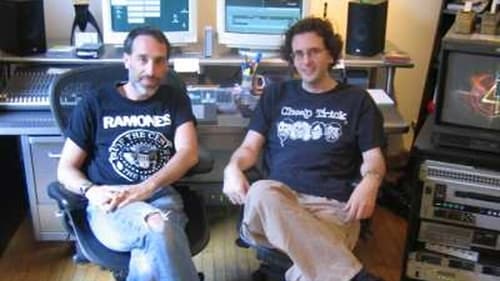
A years-in-the-making documentary on the legendary punk band the Ramones. Through a mixture of archival footage, archival and new interviews with all members of the band's various lineups, and new interviews with a number of their contemporaries, the film traces the peaks and valleys the band experienced over the course of its 20-plus year career before disbanding in 1995.

Himself (archive footage)
Andy Warhol, one of the most influential artists of the 20th century (who also coined the immortal catchphrase "In the future, everyone will be famous for 15 minutes"), gets the definitive treatment. This film includes a look into his inner circle and examines both his artistic and personal impact on society. From day-glo Marilyns and Elvises to Campbell's Soup cans to the groovy 1960s and '70s, step into the limelight of the Warhol world.

Self
A compilation of over 30 years of private home movie footage shot by Lithuanian-American avant-garde director Jonas Mekas, assembled by Mekas "purely by chance", without concern for chronological order.

Self (archive footage)
Unpredictably, as most of my life’s key events have been, for a period of several years of late sixties and early seventies, I had the fortune to spend some time, mostly during the summers, with Jackie Kennedy’s and her sister Lee Radziwill’s families and children. Cinema was an integral, inseparable, as a matter of fact, a key part of our friendship. The time was still very close to the untimely, tragic death of John F. Kennedy. Jackie wanted to give something to her children to do, to help to ease the transition, life without a father. One of her thoughts was that a movie camera would be fun for children. Peter Beard, who was at that time tutoring John Jr. and Caroline in art history, suggested to Jackie that I was the man to introduce the children to cinema. Jackie said yes. And that’s how it all began

Himself (archive footage)
Follows John Cale, a Welsh musician and producer, who founded the legendary 60s and 70s NY rock band - the Velvet Underground, with Lou Reed. Cale delved into other mainstream and experimental music genres as well.

Himself
On October 9th, 1972 an exhibition of John Lennon/Yoko Ono's art, designed by the Master of the Fluxus movement, George Maciunas, opened at the Syracuse Museum of Art, in New York. On the same day an unusual group of John's and Yoko's friends, including Ringo, Allen Ginsberg, Paul Krasner, and many others, gathered to celebrate John's birthday. This film is a visual and audio record of that event.

Self
Filmmaker Jonas Mekas films 160 underground film people over four decades.

Himself (archive footage)
Not a documentary in the strictest sense of the word. Rather, it is a journey through the world of the artist Jonas Mekas - one of the exponents of independent U.S. movies; founder and director of the New York Anthology Film Archive.

Self (archived footage)
Spotlights the Velvet Underground's 1993 reunion tour of Europe, interspersing footage of the band's Paris concert and interviews with the members of the group. Concerts in Prague and Berlin included.
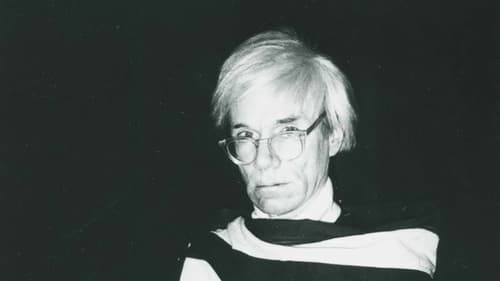
Self (archive footage)
Documentary portrait of Andy Warhol.
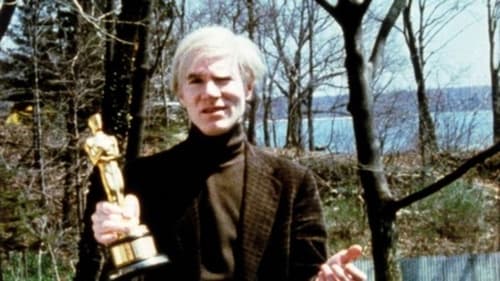
Self
This intimate portrait of Andy Warhol pulls together a unique library of material shot by New York film legend Jonas Mekas. Spanning from 1963 to 1990, the film features a cast of counterculture icons including Allen Ginsberg, George Maciunas, John Lennon, and Yoko Ono, as well as John and Caroline Kennedy, and Lee Radziwill (Jackie Kennedy Onassis's sister and Warhol muse)—to whom Mekas dedicates the film. The film features footage from the Velvet Underground's first public performance. A portrait of the remarkable life of arguable the twentieth century's most famous artist and leading iconographer.
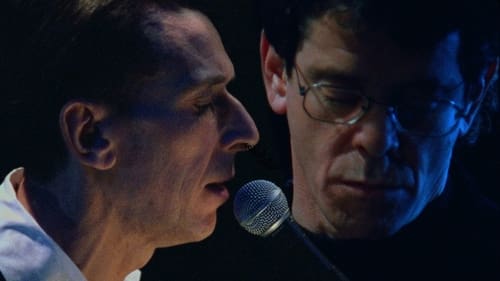
In Memory Of
Songs for Drella is a concept album by Lou Reed and John Cale, both formerly of The Velvet Underground, and is dedicated to the memory of Andy Warhol, their mentor, who had died unexpectedly in 1987. Drella was a nickname for Warhol coined by Warhol Superstar Ondine, a contraction of Dracula and Cinderella, used by Warhol's crowd. The song cycle focuses on Warhol's interpersonal relations and experiences, with songs falling roughly into three categories: Warhol's first-person perspective (which makes up the vast majority of the album), third-person narratives chronicling events and affairs, and first-person commentaries on Warhol by Reed and Cale themselves. The songs on the album are, to some extent, in chronological order.

Nelson Sullivan, a videographer in Manhattan circa 1983 to 1989, documented a large chunk of the final six years of his life, capturing his days and nights with drag queens and other NYC outcasts of the time. His style takes on a "home movie quality" that captures a lost - and now romanticized - American era in all of its mundane glory.

Himself (archive footage)
Documentary on Andy Warhol's cinema of the sixties, made for Channel 4 in association with The Factory, MOMA and the Whitney Museum of Art and in collaboration with Simon Field.
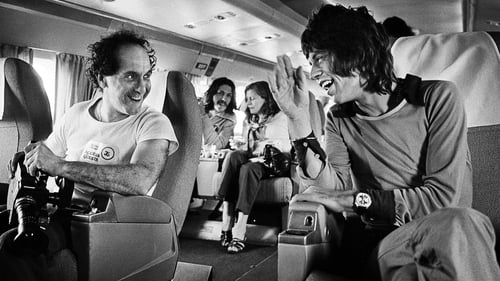
Self
This fly-on-the-wall documentary follows the Rolling Stones on their 1972 North American Tour, their first return to the States since the tragedy at Altamont.

Himself
Penn Jillette and Teller are called upon to display their unique brand of humor to save civilization from strange extraterrestrial beings who have invaded Earth and who, disgruntled and bored with the mundane nature of human life, threaten to blow up the planet unless someone gives them a good reason not to.

Himself
The first major profile of the American Pop Art cult leader after his death in 1987 covers the whole of his life and work through interviews, clips from his films, and conversations with his family and superstar friends. Andy Warhol, the son of poor Czech immigrants, grew up in the industrial slums of Pittsburgh while dreaming of Hollywood stars. He went on to become a star himself.
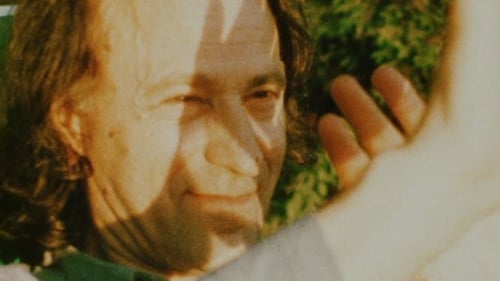
Self
A film collage tracing the story of the lives, loves, and deaths within the artistic community surrounding Jonas Mekas.
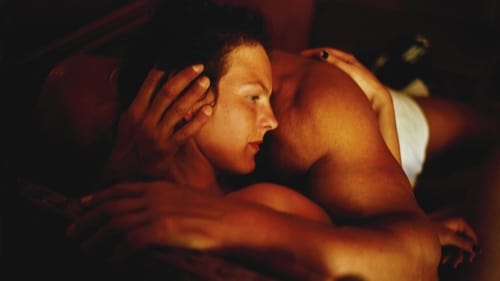
Nan Goldin's slide show “The Ballad of Sexual Dependency” converted, mixed and screened as a film by the artist, portraying the American underground culture, the no wave scene, post-Stonewall gay subculture, among others.

Himself
Donald is shown in both animated and costumed form, interacting with emcee Dick Van Dyke and other cast members. The film not only shows Donald's life, but also depicts an extensive international tour that Donald went on in 1984 as well as showing various celebrities of the day wishing Donald happy birthday. The tour culminates in a parade in Donald's honor at Disneyland.

The Cars were on the cutting edge when it came to music videos. And this Heartbeat City video compilation, with songs from three of the band's most successful CDs, is no exception. Inspired by their 1984 platinum-selling album this sight-and-sound spectacular includes extensive video clips and performance footage not available on TV. A combination of innovative production techniques and The Cars' own inimitable Pop Art style makes this video compilation a fitting showcase for one of the most unique rock-'n'-roll bands in America.

Himself
A short documentary profile of the Anthology Film Archives, shot on the eve of the move to the historic 2nd Avenue Courthouse. Staff and patrons are interviewed, and films preserved by Anthology are spotlighted.

Himself (uncredited)
A Lou Reed concert at the Bottom Line in New York City, 1983. Tracklist: Sweet Jane, I'm Waiting For The Man, Martial Law, Don't Talk To Me About Work, Women, Waves of Fear, Walk on the Wild Side, Turn Out the Lights, New Age, Kill Your Sons, Satellite of Love, White Light / White Heat, Rock And Roll.
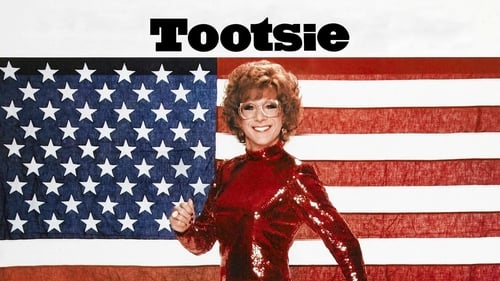
Himself (uncredited)
When struggling, out of work actor Michael Dorsey secretly adopts a female alter ego - Dorothy Michaels - in order to land a part in a daytime drama, he unwittingly becomes a feminist icon and ends up in a romantic pickle.

Himself
As a visual narrative it is reminiscent of a pile of postcards from a journey, which indeed is what the film is. It consists of a series of lengthy shots of a tableau nature, each appearing to be a more or less random cross section of American reality, but which in total invoke a highly emblematic picture of the USA.

himself
Why a hamburger? As an immigrant, Warhol admired the idea that in America the same food and drinks are consumed by people regardless of their status – the president drinks the same Coke as him. The clash of cultures deeply influenced the subject matter of his art. A burger might as well appear as a tribute to the idea of American life.

Self
MODEL shows male and female models at work on TV commercials, fashion shows, magazine covers, and advertising for a variety of products, including designer collections, fur coats, sports clothes and automobiles. The models are seen at work with photographers whose techniques illustrate different styles of fashion and product photography. The business aspect of running an agency is also shown: interviewing prospective models, career counseling, arranging portfolios, talking with clients, and planning trips. The film presents a view of the intersections of fashion, business, advertising, photography, television and fantasy.

This TV documentary was made for the UK BBC TV "Arena" strand in 1981, and shows some of the colourful residents of and people connected with the New York Chelsea Hotel. Some highlights include Andy Warhol and William Burroughs having dinner; Quentin Crisp pontificating in a blue rinse hairdo on his balcony and Nico forgetting what she is talking about halfway through a dour rendition of "Chelsea Girls". A number of lesser-known characters also appear, linked together by a tour guide walking around the building and some sub-Shining sequences of a child cycling round the landings on a rickety tricycle. (IMDb)

Self
Nada, a beautiful French journalist on assignment in New York, records the life and work of an up and coming punk rock star, Billy. Soon she enters into a volatile relationship with him and must decide whether to continue with it, or return to her lover, a fellow journalist trying to track down the elusive Andy Warhol.

Self
A definitive eight part series on the rise and fall of the modern art movement presented by critic Robert Hughes.

Himself
Ernie Anderson narrates this look at the making of Richard Donner's blockbuster 1978 film. Behind-the-scenes footage, as well as scenes from the film, reveal just how audiences were able to "believe a man can fly." This program features interviews with key cast and crew.
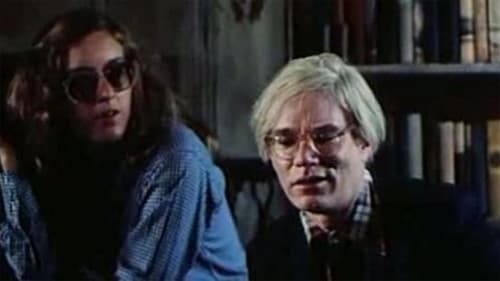
Self
A rock band is on the brink of super-stardom. Until now they've juggled their music career with cocaine smuggling. The musicians and their manager wish to sever ties with organized-crime, leave the drug world behind and concentrate on music. They are coerced into doing one last job for the Mob. They lose the $2 million of cocaine and find themselves marked men unless they can fulfill their obligations.

Tally Brown, New York is a 1979 documentary film directed, written and produced by Rosa von Praunheim. The film is about the singing and acting career of Tally Brown, a classically trained opera and blues singer who was a star of underground films in New York City and a denizen of its underworld in the late 1960s. In this documentary, Praunheim relies on extensive interviews with Brown, as she recounts her collaboration with Andy Warhol, Taylor Mead and others, as well as her friendships with Holly Woodlawn, and Divine. Brown opens the film with a cover of David Bowie’s “Heroes” and concludes with “Rock ’n’ Roll Suicide.” The film captures not only Tally Brown’s career but also a particular New York milieu in the 1970s.

Himself

Executive Producer
Hazel runs a beauty salon out of her house, but makes extra money by providing ruthless women the oppurtunity to perform hit jobs. L.T. is a parasite, and contacts Hazel looking for work after he runs out of money. She is reluctant to use him for a hit, since she prefers using women, but decides to try him on a trial basis. Meanwhile, the cop she pays off wants an arrest to make it look like he's doing his job, but Hazel doesn't want to sacrifice any of her "associates". The sleazy side of life is explored in this delightfully dark and deadpan film.

Self
In this film, outspokenly homosexual filmmaker Rosa von Praunheim has documented his encounters with friends in the New York "underground" arts movement, the better-known of whom are William Burroughs (who says nothing for the camera), Andy Warhol (seen in the distance) and Fernando Arrabal (who is interviewed in Spanish). The emigrants named in the title are notable Germans who left the country before World War II, such as Greta Keller and Grete Mosheim. Reviewers at the time of the film's release considered it to have been a sort of paid vacation for the filmmaker rather than a serious effort. (Clarke Fountain, Rovi)

In 1969 Michel Auder began a series of video diaries that chronicled the art scene in downtown New York. In Chelsea Girls with Andy Warhol, Auder captures revealing moments in Warhol's public and private life: the opening of the 1970 Whitney Museum retrospective, a party held at John Lennon and Yoko Ono's home, a heated telephone conversation between Warhol, Viva and Brigid Berlin, and an illuminating interview conducted with Larry Rivers, the grandfather of Pop Art, following the publication of The Philosophy of Andy Warhol in 1975. The issue of money is a consistent topic of conversation with Viva, who after departing the Factory in 1969 sent Warhol a series of threatening letters demanding money.

Self
In conversation with Roy Lichtenstein, critic Lawrence Alloway places Pop Art on a continuum of twentieth-century art that includes collage, Dada, and Purism in referring to signs and objects of contemporary society; Lichtenstein argues for distinctions between himself, Warhol, Oldenburg, and others. In his Long Island studio, Lichtenstein works on an elaborate composition; one of his 4 major paintings on the theme "The Artist's Studio."

Producer
Deathly ill Count Dracula and his slimy underling, Anton, travel to Italy in search of a virgin's blood. They're welcomed at the crumbling estate of indebted Marchese Di Fiore, who's desperate to marry off his daughters to rich suitors. But there, instead of pure women, the count encounters incestuous lesbians with vile blood and Marxist manservant Mario, who's suspicious of the aristocratic Dracula.
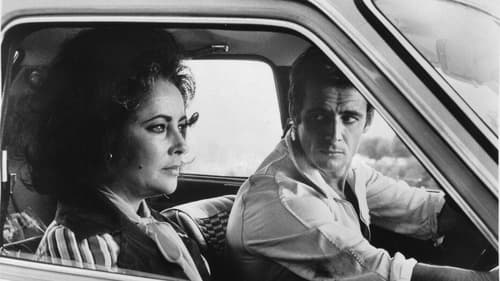
English Lord
Lise, a mentally unbalanced middle-aged woman, travels from her home in London to Rome, Italy where she embarks on a fatal destiny that she had helped to arrange for herself — a premeditated search for someone, anyone, with whom she could form a dangerous liaison.

Himself
A kaleidoskopic image of Andy Warhol, presumably found footage from some interview, is slowed down and played over sudden pangs of screeching white noise. Warhol's own distorted, delayed, voice guides us through the gaseous hallucination.
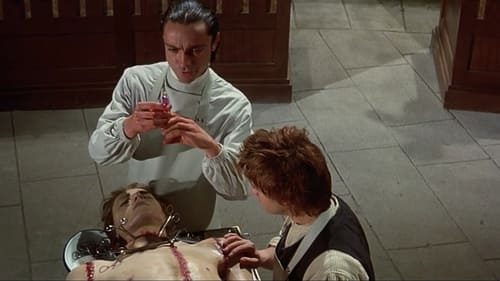
Producer
Within the decadent walls of the Frankenstein mansion, the Baron and his depraved assistant Otto have discovered the means of creating new life. As the Baron's laboratory begins to fill up with stitched body parts, the Baroness dallies with the randy new manservant and soon the decadent, permissive household is consumed by an outrageous, bizarre, and hilarious orgy of death and dismemberment.

Writer
Donna and Jane are two American hippies, searching for sex and romance in Paris but, mainly, rich husbands. Eventually, Donna finds a perfume industrialist, Michael, who wishes to marry her, providing she will accept sharing his special friendship with local gigolo Max. Drama ensues as Michael changes his mind when meeting Jane, but all is well that ends well.

Director
Donna and Jane are two American hippies, searching for sex and romance in Paris but, mainly, rich husbands. Eventually, Donna finds a perfume industrialist, Michael, who wishes to marry her, providing she will accept sharing his special friendship with local gigolo Max. Drama ensues as Michael changes his mind when meeting Jane, but all is well that ends well.

Himself
David Bailey, self-taught photographer and one of the prime architects of the Swinging Sixties, broadened his horizons in the early 1970s by making high-profile documentaries for ATV. With his standing among the artistic community, Bailey was given unprecedented access to Pop Art legend Andy Warhol and his followers, in an attempt to penetrate behind the expressionless exterior of a man who was one of the most controversial figures of his generation.
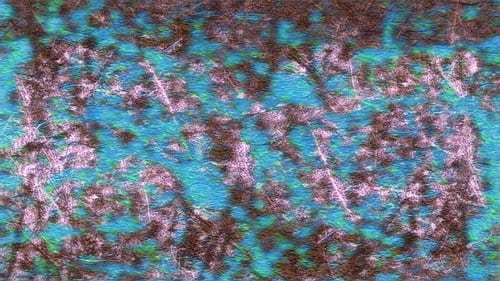
Painters Painting: The New York Art Scene 1940-1970 is a 1972 documentary directed by Emile de Antonio. It covers American art movements from abstract expressionism to pop art through conversations with artists in their studios. Artists appearing in the film include Willem de Kooning, Jasper Johns, Andy Warhol, Robert Rauschenberg, Helen Frankenthaler, Frank Stella, Barnett Newman, Hans Hofmann, Jules Olitski, Philip Pavia, Larry Poons, Robert Motherwell, and Kenneth Noland.

Producer
An improvised hour-long fight between Brigid Berlin & Charles Rydell. Produced by Andy Warhol.
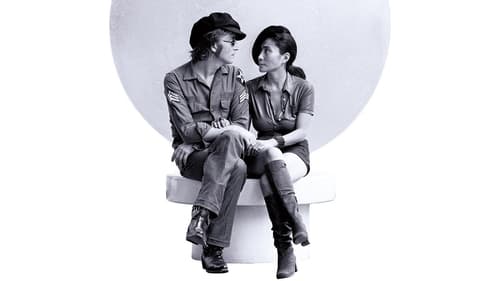
Himself
A surreal, half-fiction, half real life footage of a day in the life of John lennon and Yoko Ono, composed to music from John's historic 'Imagine' album and Yoko's 'Fly'.
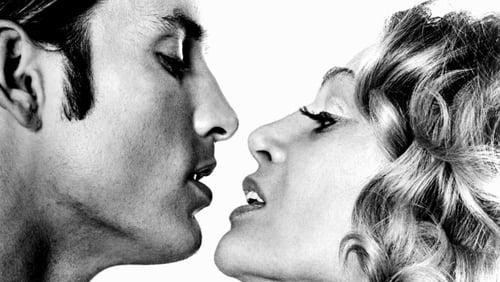
Producer
Former child star Joe Davis, reduced to living in a cheap Hollywood motel while struggling for acting jobs, is lusted after by nearly every woman he meets, including Jessica Todd, a tightly wound feminist who has recently come out as a lesbian. When Jessica's mother, Sally, an emotionally needy has-been actress, meets Joe, she moves him into her enormous, tacky mansion as her new boy toy and attempts to get him acting work.
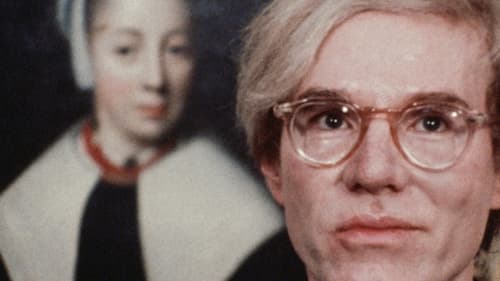
Self
With a rambling, unstructured style that echoes Andy Warhol’s own approach to filmmaking, this documentary profiles his career, showing him to be a brilliant manipulator, dedicated voyeur and person of astute commercial judgment.

Himself
During this critical decade in American life, artists built on the styles of the 1950s. An explosion of artistic energy produced Pop Art, Minimalism, color-field painting, and hard-edged abstraction. Sculptors and painters on both coasts explored new methods and new subject matter. American Art in the Sixties examines the key figures of that decade including Rauschenberg and Johns, two crucial transitional figures between Abstract Expressionism and the sensibilities of the new decade. The art of that time mirrors the optimism and the affluence, and the technology and the vulgarity of those boom years.

Director of Photography
Three women join a militant feminist group, P.I.G. (Politically Involved Girls), but their newfound liberation doesn't make them any happier.

Producer
Three women join a militant feminist group, P.I.G. (Politically Involved Girls), but their newfound liberation doesn't make them any happier.

Himself
This is the debut documentary made by Alexis Krasilovsky, author of "Women Behind The Camera" (Praeger, 1997). Shot on 16mm in 1971, the film covers much of the New York avant-garde of the time.

Self
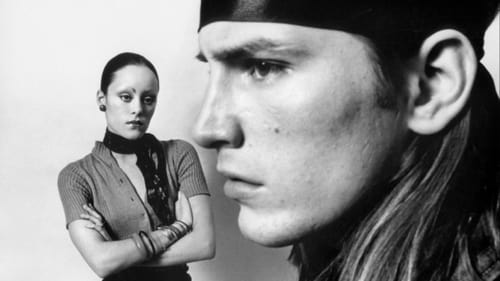
Producer
The movie follows Joe, a heroin addict, throughout his quest to score more drugs. The episodic plot occurs over a single day and centers around Joe's problematic relationship with his on-off, sexually frustrated girlfriend. During the course of the day, Joe overdoses in front of an upper-class couple, attempts to fool Welfare into approving his methadone treatment by having Holly fake a pregnancy, and frustrates the women in his life with his drug-induced impotence.

Himself
Documentary
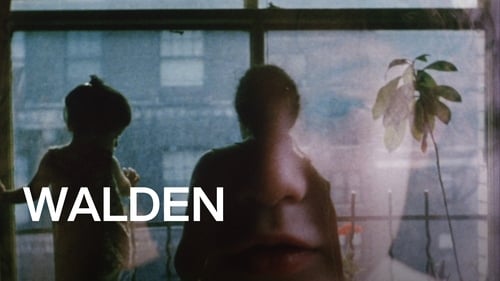
Self
An epic portrait of the New York avant-garde art scene of the 60s.
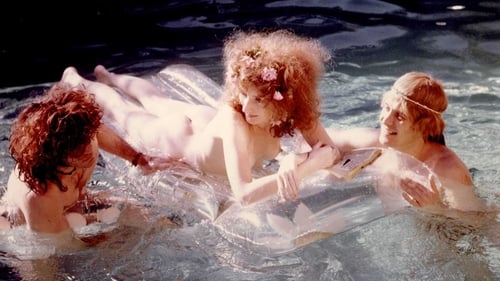
Self (uncredited)
Three actors in Hollywood live and love together. A director comes from New York to make a movie about actors and Hollywood.

Producer
Viva and Louis Waldon spend an idyllic afternoon together in an apartment in New York City.

Director of Photography
Viva and Louis Waldon spend an idyllic afternoon together in an apartment in New York City.

Director
Viva and Louis Waldon spend an idyllic afternoon together in an apartment in New York City.

Producer
A heroin junkie works as a prostitute to support his habit and fund an abortion needed by the girlfriend of his lesbian wife. His seedy encounters with delusional and damaged clients, and dates with drag queens and hustlers are heavy on sex, drugs and decadence.

Director

Producer
Five lonesome cowboys get all hot and bothered at home on the range after confronting Ramona Alvarez and her nurse.

Director
Five lonesome cowboys get all hot and bothered at home on the range after confronting Ramona Alvarez and her nurse.

Director
Ondine is a gay man attempting to re-adjust his sexuality via various encounters with different women. After trying his luck with three women, Ondine becomes a background character in a sequence in which a group of Latin American men, calling themselves The Bananas, engage in a food fight. Ondine then engages in a wrestling match with Joe Dallesandro, who is married to Brigid Berlin.

Director
Viva and Taylor Mead are a married couple renting an extra beach-house to a group of surfers sent to them by a Mr. Morrissey of La Jolla Realty. Their daughter, Ingrid Superstar, is pregnant and on the hunt for a husband. Mr. Mead, who is gay, tries to pawn her off to one of the surfers. Meanwhile, Viva wants a divorce from her boy-crazy hubby, who wants a surfer of his own. Tom, a surfer, is inveigled by Mr. Mead to urinate on him. In a close-up, Mr. Mead receives Tom's offering ecstatically, after which he comments, "I'm a real surfer now."
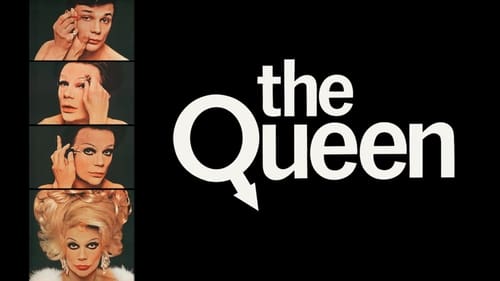
Self - Jury Member
In 1967, New York City is host to the Miss All-American Camp Beauty Pageant. This documentary takes a look behind the scenes, transporting the viewer into rehearsals and dressing rooms as the drag queen subculture prepares for this big national beauty contest. Jack/Sabrina is the mistress of ceremonies, and their protégé, Miss Harlow, is in the competition. But, as the pageant approaches, the glamorous contestants veer from camaraderie to tension.

Documentary on the use of color and black and white in contemporary arts through nine artists.
A “Cinéastes de notre temps” series episode directed by french film critic André S. Labarthe, originally aired 16 March 1968.

Self
A rare behind-the-scenes view of the exploding New York “underground” in the late sixities, a turbulent time and place that was to change American culture forever. A German TV crew, led by journalist Gideon Bachmann, explores the epicenter of the sixties revolution in art, music, poetry and film and interviews the main players in the “New American Cinema,” that was born on the streets of New York. Against a backdrop of cultural upheaval in all of the arts and growing political agitation against the Vietnam War, Bachman interviews the most prominent figures in “underground film,” including Jonas Mekas, Shirley Clarke, the Kuchar Brothers and Bruce Connor, and visits the most notorious location in the New York art world of the era - Andy Warhol’s Factory - to conduct an interview with the genius of Pop Art himself.

Between the French La Nouvelle Vague and the Italian Neorealismo, Europe had been undergoing a continuous cinema transformation since the 1950s, while the ailing American studio system groaned under its own weight and inertia. New Hollywood had arrived with Bonnie and Clyde in 1967, and already by 1968 it was changing how Hollywood thought and acted. The student film scene was getting ready to explode, and it knew it.
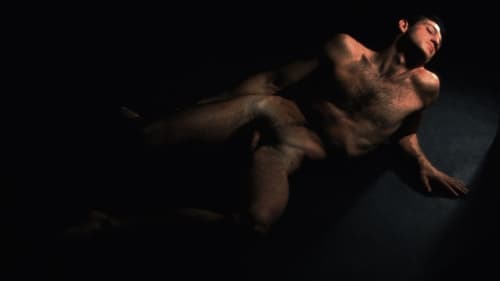
Poseidon
Prometheus, on an Odyssean journey, crosses the Brooklyn Bridge in search of the characters of his imagination. After meeting the Muse, he proceeds to the "forest." There, under an apple tree, he communes with his selves, represented by celebrated personages from the New York "underground scene" who appear as modern correlatives to the figures of Greek mythology. The filmmaker, who narrates the situations with a translation of Aeschylus' Prometheus Bound , finds the personalities of his characters to have a timeless universality.

The story of Joan of Arc as applied to the present revolution in arts and more. The Gothic is applied to the War in Vietnam. The film is experimental in the sense that in it the visual becomes tactile.

Cinematography
Photographed entirely in color, Four Stars was projected in its complete length of nearly 25 hours (allowing for projection overlap of the 35-minute reels) only once, at the Film-Makers' Cinematheque in the basement of the now-demolished Wurlitzer Building at 125 West 41st Street in New York City. The imagery in the film is dense, wearying and beautiful, but ultimately hard to decipher, for, in contrast to his earlier, and more famous film Chelsea Girls, made in 1966, Warhol directed that two reels be screened simultaneously on top of each other on a single screen, rather than side-by-side.

Director
Photographed entirely in color, Four Stars was projected in its complete length of nearly 25 hours (allowing for projection overlap of the 35-minute reels) only once, at the Film-Makers' Cinematheque in the basement of the now-demolished Wurlitzer Building at 125 West 41st Street in New York City. The imagery in the film is dense, wearying and beautiful, but ultimately hard to decipher, for, in contrast to his earlier, and more famous film Chelsea Girls, made in 1966, Warhol directed that two reels be screened simultaneously on top of each other on a single screen, rather than side-by-side.

Director of Photography
At a New York City restaurant, the patrons are men, nude but for a G-string, waited on by one woman, also clad in a G-string and a G-bestringed waiter.

Producer
At a New York City restaurant, the patrons are men, nude but for a G-string, waited on by one woman, also clad in a G-string and a G-bestringed waiter.

Editor
At a New York City restaurant, the patrons are men, nude but for a G-string, waited on by one woman, also clad in a G-string and a G-bestringed waiter.

Writer
At a New York City restaurant, the patrons are men, nude but for a G-string, waited on by one woman, also clad in a G-string and a G-bestringed waiter.

Director
At a New York City restaurant, the patrons are men, nude but for a G-string, waited on by one woman, also clad in a G-string and a G-bestringed waiter.

Director
Warhol's Factory visits Los Angeles.

Director
Joe Spencer, a member of a motorcycle gang, is taking a shower. After his bout with personal hygiene, Joe encounters Andy Warhol's "superstars," who engage him in conversation. The superstars crack jokes he doesn't understand and continually correct his poor pronunciation in an attempt to deflate his machismo. In response to these provocations, Joe becomes more obscene and more boasting, but ultimately, he cannot compete with the put-downs that are part of the put-on performances of the Warhol superstars, who prevail over him in the end.
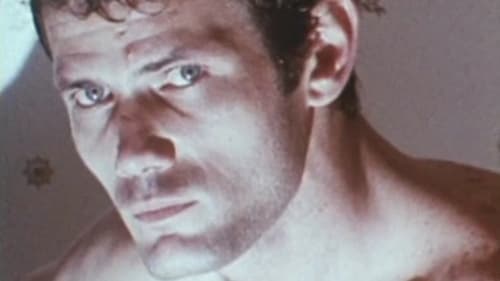
Director
Morrissey and Warhol's commercial take on the Swedish film I, A Woman. Somebody suggested to Warhol that they wanted a sexploitation film in the vein of I, A Woman, and so he and Morrissey concocted I, A Man. They created the story of this male hustler who talks with and sleeps with a series of women over the course of the film. The women are: a young woman who worries about parental acceptance of her sexuality, a woman who is on a couch, a woman with whom he does a seance, a woman who speaks French, a lesbian, and a married woman.

Himself
... with real-life portraits of Jayne Mansfield, Frak O'Hara, Ruth Ford, Ned Rorem, Virgil Thomson, Claes Oldenburg, Roy Lichtenstein, William Burroughs, Andy Warhol, Rudy Gernreich, Jonas Mekas and others.

Cinematography
A rare, unfinished film by Andy Warhol, Sunset is a meditation on the temporality of an everyday phenomenon. Here, a sunset over the Pacific Ocean in California unfolds as a slow and colorful shift of atmospheric light at dusk. As the sun sinks to the horizon, the deep voice of the singer Nico, who was then working with the Velvet Underground, is heard reading poetry off-screen.

Director
A rare, unfinished film by Andy Warhol, Sunset is a meditation on the temporality of an everyday phenomenon. Here, a sunset over the Pacific Ocean in California unfolds as a slow and colorful shift of atmospheric light at dusk. As the sun sinks to the horizon, the deep voice of the singer Nico, who was then working with the Velvet Underground, is heard reading poetry off-screen.

Himself
This pop movie about Warhol includes appearances by Henry Geldzahler, Edie Sedgwick and The Velvet Underground.

Cinematography
This newly unearthed film, which Warhol shot during a concert at the Boston Tea Party, features a variety of filmmaking techniques. Sudden in-and-out zooms, sweeping panning shots, in-camera edits that create single frame images and bursts of light like paparazzi flash bulbs going off mirror the kinesthetic experience of the Exploding Plastic Inevitable, with its strobe lights, whip dancers, colorful slide shows, multi-screen projections, liberal use of amphetamines, and overpowering sound. It is a significant find indeed for fans of the Velvets, being one of only two known films with synchronous sound of the band performing live, and this the only one in color.

Director
This newly unearthed film, which Warhol shot during a concert at the Boston Tea Party, features a variety of filmmaking techniques. Sudden in-and-out zooms, sweeping panning shots, in-camera edits that create single frame images and bursts of light like paparazzi flash bulbs going off mirror the kinesthetic experience of the Exploding Plastic Inevitable, with its strobe lights, whip dancers, colorful slide shows, multi-screen projections, liberal use of amphetamines, and overpowering sound. It is a significant find indeed for fans of the Velvets, being one of only two known films with synchronous sound of the band performing live, and this the only one in color.

Director
Mod fashion guru Joan "Tiger" Morse delivers a drug-fueled soliloquy on various topics.

Himself
Documentarians Juan Drago and Bruce Torbet follow a surprisingly relaxed and open Andy Warhol, at the peak of his powers in 1965 and 1966, around his bustling original "Factory" in midtown Manhattan. Warhol experiments with an early videotape machine, recording a beautiful, laughing Edie Sedgwick - his "superstar" of the moment - for the video portion of "Outer and Inner Space," his filmed record of the "live" Sedgwick juxtaposed against her video image on an adjacent monitor. Also captured is a Warhol show at the Leo Castelli gallery, including the famous Mylar "Clouds," as various unnamed art dealers and critics muse in voiceover about the meaning and significance of Warhol's work.

Director
"Tub Girls" features Warhol superstar Viva lying in a bathtub with different people of both sexes, including Brigid Berlin (as Brigid Polk), who appeared fully clothed in the tub.

Director
Scenes of Sausalito, California, including boats, the docks, and streets. Eventually, the setting turns to night and boats appear silhouetted against the sky. A woman speaks poetic phrases on the soundtrack; at intervals her face is seen. A band begins to play but ceases again as lights appear in distant windows.
![Screen Test: Jonas Mekas [ST211]](/assets/images/no-backdrop.png)
Director
Screen test for Andy Warhol, 1966

Director
Nico, in a pseudo ‘commercial’, holds a large, partially unwrapped Hershey bar to her chin, with the labelling upside down; the camera remains stationary while she gazes morosely into the distance.

Producer
A series of Andy Warhol’s screen tests, focusing on an actor’s face for 4-5 mins.

Director
A series of Andy Warhol’s screen tests, focusing on an actor’s face for 4-5 mins.

Producer
One of Andy Warhol's screen tests, focusing on an actor's face for 4-5 mins.

Director
One of Andy Warhol's screen tests, focusing on an actor's face for 4-5 mins.

Director
Screen Test of Lou Reed.

Director
Screen Test of Edie Sedgwick and Kipp Stagg (aka Bima Stagg).

Director
Screen test with George Millaway and Archie.

Cinematography
Andy Warhol's experimental reconstruction of the assassination of the President of the United States, John F. Kennedy, which serves as his critical commentary on the way the media presented the tragic event.

Producer
Andy Warhol's experimental reconstruction of the assassination of the President of the United States, John F. Kennedy, which serves as his critical commentary on the way the media presented the tragic event.

Director
Andy Warhol's experimental reconstruction of the assassination of the President of the United States, John F. Kennedy, which serves as his critical commentary on the way the media presented the tragic event.

Director
A portrait of the ultimate Chelsea Girl. Nico sits for over an hour while dazzling colored lights and psychedelic-patterned slides are projected onto her statuesque face. She breaks down in tears during the second reel, which made it into the final version of The Chelsea Girls.
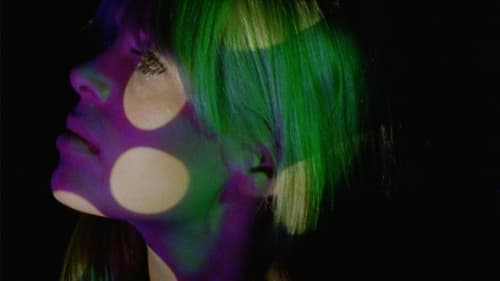
Cinematography
Lacking a formal narrative, Warhol's mammoth film follows various residents of the Chelsea Hotel in 1966 New York City. The film was intended to be screened via dual projector set-up.

Producer
Lacking a formal narrative, Warhol's mammoth film follows various residents of the Chelsea Hotel in 1966 New York City. The film was intended to be screened via dual projector set-up.

Writer
Lacking a formal narrative, Warhol's mammoth film follows various residents of the Chelsea Hotel in 1966 New York City. The film was intended to be screened via dual projector set-up.

Director
Lacking a formal narrative, Warhol's mammoth film follows various residents of the Chelsea Hotel in 1966 New York City. The film was intended to be screened via dual projector set-up.

Cinematography
Documents each member of The Velvet Underground having their cards read at a big apartment party. The tarot reader is continually interrupted in her readings by the chaos created by the characters around her.

Cinematography
Or "Moe in Bondage" - The "Moe" of the title is the Velvet Underground's drummer, Maureen Tucker, whose band-mates have tied her to a chair and are now hanging around nibbling on sandwiches and pieces of fruit.

Camera Operator
Documents each member of The Velvet Underground having their cards read at a big apartment party. The tarot reader is continually interrupted in her readings by the chaos created by the characters around her.

Director
Documents each member of The Velvet Underground having their cards read at a big apartment party. The tarot reader is continually interrupted in her readings by the chaos created by the characters around her.

Director
Or "Moe in Bondage" - The "Moe" of the title is the Velvet Underground's drummer, Maureen Tucker, whose band-mates have tied her to a chair and are now hanging around nibbling on sandwiches and pieces of fruit.

Himself
Velvet Underground's first public appearance.

Director
Andy Warhol "Screen Test" of a sixth-month-old Pénélope Palmer, going about her business.

This program profiles Andy Warhol and Roy Lichtenstein, two of pop art's greatest icons. Back-to-back interviews highlight their differences. The voluble Lichtenstein, interviewed in his studio, discusses his methods and the use of familiar objects in his art. The reticent Warhol baits the interviewer, who attempts to extract concrete statements from the elusive artist. The Warhol segment is supplemented by footage of his band, the Velvet Underground; a clip of one of his short films, "Nancy Worthington Fish"; and brief comments from Edie Sedgwick, one of Warhol's proteges.

Director of Photography
Egotistical faded star Hedy Lamarr visits a plastic surgeon to be transformed into the "14-year-old girl" she believes herself to be. She is then caught shoplifting by Mary Woronov and is put on trial, with Tavel as the judge and her five ex-husbands the jury. Hedy remains self-centered and detached throughout, posing and primping and bursting out renditions of "I Feel Pretty" and "Young at Heart."

Producer
Egotistical faded star Hedy Lamarr visits a plastic surgeon to be transformed into the "14-year-old girl" she believes herself to be. She is then caught shoplifting by Mary Woronov and is put on trial, with Tavel as the judge and her five ex-husbands the jury. Hedy remains self-centered and detached throughout, posing and primping and bursting out renditions of "I Feel Pretty" and "Young at Heart."

Director
Egotistical faded star Hedy Lamarr visits a plastic surgeon to be transformed into the "14-year-old girl" she believes herself to be. She is then caught shoplifting by Mary Woronov and is put on trial, with Tavel as the judge and her five ex-husbands the jury. Hedy remains self-centered and detached throughout, posing and primping and bursting out renditions of "I Feel Pretty" and "Young at Heart."

Director
Instructed by Warhol to write a vehicle for Edie Sedgwick in a “completely white” setting, scenarist Ronald Tavel created one of Warhol’s most iconic films. Here a group of performers of all stripes – the sink and litter basket receive equal billing to the human actors – are forced into Warhol and Tavel’s cruelly comical theatre of the absurd. Inside this cramped domestic space, boredom, confusion and a sense of existential dread hang heavy in the air. Warhol and Tavel transform the modern 1960s kitchen – replete with the latest gadgets and conveniences – into a chaotic laboratory for self-creation and interpersonal conflict.

Producer
Warhol offers his own version of the notorious 1958 Johnny Stompanato murder case.

Director
Warhol offers his own version of the notorious 1958 Johnny Stompanato murder case.

Director
Andy Warhol’s film Lupe (1966) restages the mythic account of one celebrity’s suicide as a strategic ploy to envision another’s. Lupe is known to be Warhol’s take on Kenneth Anger’s own fabricated account of Lupe Vélez’s (also known as Hollywood’s ‘Mexican Spitfire’) suicide; Edie Sedgwick is cast as Vélez living out her last morning, evening and final dramatic exit. (berlinfilmjournal.com)

Art Direction
Andy Warhol’s film Lupe (1966) restages the mythic account of one celebrity’s suicide as a strategic ploy to envision another’s. Lupe is known to be Warhol’s take on Kenneth Anger’s own fabricated account of Lupe Vélez’s (also known as Hollywood’s ‘Mexican Spitfire’) suicide; Edie Sedgwick is cast as Vélez living out her last morning, evening and final dramatic exit. (berlinfilmjournal.com)
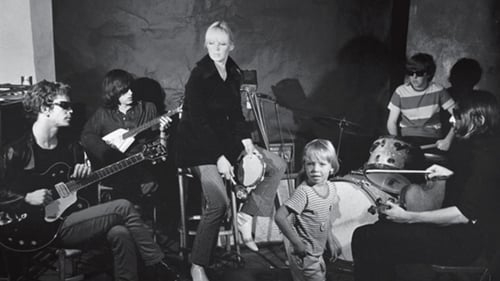
Himself
The film depicts a rehearsal of The Velvet Underground including Nico, and is essentially one long loose improvisation.

Director
The film depicts a rehearsal of The Velvet Underground including Nico, and is essentially one long loose improvisation.

Director
"Andy Warhol's 1966 'sequel' to his Blow Job begins with a long static shot of Gregory Battcock looking bored; small movements of his head reframe the elegant tight close-up to make sun and shadow symmetrical on his face, or unbalance them again, while street noises expand the shot's implied space. Halfway through this 70-minute film, the camera pans down to reveal the back of another man's head. Zooms and more pans follow, yet each blocky, high-contrast composition has an assertive power characteristic of Warhol." - Fred Camper

Director
The Velvet Underground's first public appearance, filmed in Super 8 at a Psychiatrist's Convention, at the Delmonico Hotel, New York, January 14, 1966. Andy Warhol was invited to speak at the annual banquet of the New York Society for Clinical Psychiatry. He brought along the Velvets and other factory regulars.

The Velvet Underground's first public appearance, filmed in Super 8 at a Psychiatrist's Convention, at the Delmonico Hotel, New York, January 14, 1966. Andy Warhol was invited to speak at the annual banquet of the New York Society for Clinical Psychiatry. He brought along the Velvets and other factory regulars.

Director
A 16mm Warhol film of Edie Sedgwick sitting in front of a television monitor on which is playing a prerecorded videotape of herself. On the videotape, Edie is positioned on the left side of the frame, facing right; she is talking to an unseen person off-screen to our right. In the film, the “real” or “live” Edie Sedgwick is seated on the right side of the film frame, with her video image behind her, and she is talking to an unseen person off-screen to our left. The effect of this setup is that it sometimes creates the rather strange illusion that we are watching Edie in conversation with her own video image.
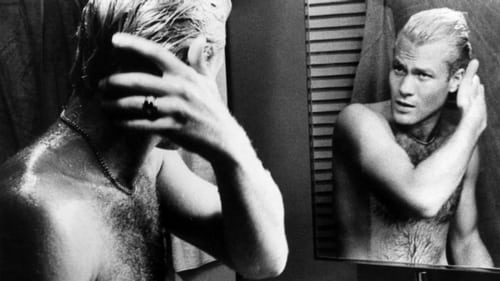
Cinematography
Set on Fire Island, My Hustler depicts competition over the affections of a young male hustler among a straight woman, a former male hustler, and the man who hired the boy's companionship via a "Dial-A-Hustler" service.

Producer
Set on Fire Island, My Hustler depicts competition over the affections of a young male hustler among a straight woman, a former male hustler, and the man who hired the boy's companionship via a "Dial-A-Hustler" service.

Director
Set on Fire Island, My Hustler depicts competition over the affections of a young male hustler among a straight woman, a former male hustler, and the man who hired the boy's companionship via a "Dial-A-Hustler" service.

Director
Queen of China (Hanoi Hanna), based on Ronald Tavel’s scenario, loosely refers to the real-life radio show host who broadcast antiwar propaganda to American soldiers in Vietnam. It is Mary Woronov’s showcase piece, in which she metes out physical and psychological abuse to Susan Bottomly, Angelina “Pepper” Davis, and Ingrid Superstar in a room at the Chelsea Hotel. At first, the cast tries to accurately adhere to Tavel’s scenario, but by reel two it all falls apart—the performers begin to use their real names and exhibit a sort of residual stress disorder that permeates the rest of the film.

Cinematography
Gerard Malanga on all fours nuzzles and kisses Mary Woronov's leather boots.

Director
Gerard Malanga on all fours nuzzles and kisses Mary Woronov's leather boots.
![Screen Test [ST270]: Lou Reed (Hershey)](/assets/images/no-backdrop.png)
Director
Lou Reed faces the camera, posing with a large, partially unwrapped Hershey chocolate bar held up next to his face. He holds quite still throughout the film until, near the end of the roll, he blinks rapidly and tilts his head to the right.
![Screen Test [ST264]: Lou Reed](/assets/images/no-backdrop.png)
Director
A close-up of Lou Reed’s mouth, as he takes nine drags on a cigarette, smiles a couple of times, licks his lips, and grimaces. Made for projection behind the Velvet Underground in performance as part of the Exploding Plastic Inevitable multi-media presentation.
![Screen Test [ST265]: Lou Reed (Eye)](/assets/images/no-backdrop.png)
Director
Begins with a close-up of Lou Reed’s eye; the camera then zooms out to a slightly broader view of his face. Toward the end he glances briefly away from the camera. Made for projection behind the Velvet Underground in performance as part of the Exploding Plastic Inevitable multi-media presentation.

Director
Reel 24. Test #3

Producer
Salvador Dalí is a 35-minute film directed by Andy Warhol. The film features surrealist artist Salvador Dalí visiting The Factory and meeting the rock band The Velvet Underground.

Director
Salvador Dalí is a 35-minute film directed by Andy Warhol. The film features surrealist artist Salvador Dalí visiting The Factory and meeting the rock band The Velvet Underground.

Director
Andy Warhol (Rene Ricard) invites a friend (Edie Sedgwick) over to his apartment one evening to discuss his career. As they talk, the truth about how Warhol uses and then throws people away comes out. The woman begins to come undone and reveals to Warhol how he ruined her life with drugs and false promises of fame.

Director
Susan Bottomly/International Velvet's screen test is dark as her piercing eyes stare into the camera, as Warhol plays with the lighting and zoom features.

Director
Richard Rheem screen test by Andy Warhol.

Director
With light only shedding on half of her face, Mary Woronov remains calm and stern as she stares into the camera, until the very end, where she sheds a slight smile.

Director
Ingrid Superstar screen test by Andy Warhol.

Director
Andy Warhol’s mother (Julia Warhola) is supposed to be pretending that she is a former Mack Sennett bathing beauty with 25 former husbands; Richard Rheem plays her current husband. Mostly, however, she appears as herself, ironing Andy’s underwear and Richard’s shirt, cooking eggs, and talking.

Producer
Andy directs Lou Reed drinking a Coke.

Producer
Screen Test: Helmut, by Andy Warhol, is a five minute silent black and white continuous close-up of a young man’s face. The face remains deathly still other than the occasional blink or involuntary bat of his eyelash. The film is slowed down to about 24-frames per-second to capture these slight movements a bit better, but other than this and the choppy fade-in’s and out’s at the beginning and end respectively, nothing changes throughout the film.

Director of Photography
A man and a woman live in a clothes-cabinet, literally; they contemplate leaving, but never do. For a time only their voices are heard, until they try to have some light, and open the door. The Woman takes an almost maternal role, they share a sandwich and a cigarette, discuss the contents of the closet, and then The Woman wonders if there is any sexual attraction between them. The Man is too shy for that, or to leave the closet.
![Screen Test [ST80]: Marcel Duchamp](/assets/images/no-backdrop.png)
Director
Marcel Duchamp alternates between scrutinizing the camera, and smiling and nodding in response to what seems to be a large crowd of off-screen admirers trying to get his attention. Occasionally he puts his fingers to his lips, indicating that he is not supposed to talk.

Producer
A man and a woman live in a clothes-cabinet, literally; they contemplate leaving, but never do. For a time only their voices are heard, until they try to have some light, and open the door. The Woman takes an almost maternal role, they share a sandwich and a cigarette, discuss the contents of the closet, and then The Woman wonders if there is any sexual attraction between them. The Man is too shy for that, or to leave the closet.

Director
A man and a woman live in a clothes-cabinet, literally; they contemplate leaving, but never do. For a time only their voices are heard, until they try to have some light, and open the door. The Woman takes an almost maternal role, they share a sandwich and a cigarette, discuss the contents of the closet, and then The Woman wonders if there is any sexual attraction between them. The Man is too shy for that, or to leave the closet.

Director
Gerard Malanga reads some of his poems and excerpts from his diaries substituting the word “bufferin” for most of the proper names in the readings, while Ronna Page gives an ongoing commentary in the film.

Director
Andy directs Lou Reed drinking a Coke.

Director
Andy directs Nico for a screen test.

Director
Screen Test: Helmut, by Andy Warhol, is a five minute silent black and white continuous close-up of a young man’s face. The face remains deathly still other than the occasional blink or involuntary bat of his eyelash. The film is slowed down to about 24-frames per-second to capture these slight movements a bit better, but other than this and the choppy fade-in’s and out’s at the beginning and end respectively, nothing changes throughout the film.

Director
An hour-long close-up of Edie singing along to rock songs, making herself up, and talking.

Director
The films were made between 1964 and 1966 at Warhol's Factory studio in New York City. Subjects were captured in stark relief by a strong key light, and filmed by Warhol with his stationary 16mm Bolex camera on silent, black and white, 100-foot rolls of film at 24 frames per second. The resulting two-and-a-half-minute film reels were then screened in 'slow motion' at 16 frames per second.

Director
Shot at Warhol's Silver Factory, Camp features a group of Superstars putting on a "summer camp" talent show complete with singing, dancing, jokes, poetry, and Gerard Malanga as master of ceremonies.

Director
Edie Sedgwick hanging out at her apartment with Ondine and others in an alcohol and amphetamine–fueled talkfest.

Producer
Two nuns take a bath, then meet a sailor on the Staten Island Ferry.

Self
Two nuns take a bath, then meet a sailor on the Staten Island Ferry.

Director
A melange of casual talking, food fights, and folk singing. The film includes Eric Andersen with his guitar, singing his lines, and leading Edie Sedgwick and her friends in unscripted sing-alongs of popular songs including "Puff the Magic Dragon" and "The Battle Hymn of the Republic".

Himself
Andy Warhol is a lyrical exploration of Warhol's creative process by filmmaker, painter, and actress Marie Menken. Using a hand-held camera, Menken captures Warhol and his assistants, including Gerard Malanga, as they work at the Factory. The result is an intimate portrait of the artist in the process of creating some of his most famous works, including the Brillo boxes, the Jackie series, and the Flowers silkscreens.

Himself
In 1964 Film Culture magazine chose Andy Warhol for its annual Independent Film award. The plan was to show some of Andy's films and have Andy come on stage and hand him the award. Andy said, no, he didn't want a public presentation.

Warhol plunked a horse named Mighty Byrd in the middle of the Factory for this dark, homoerotic take on the classic oater that later anticipates his later western epic Lonesome Cowboys.

Director
Warhol plunked a horse named Mighty Byrd in the middle of the Factory for this dark, homoerotic take on the classic oater that later anticipates his later western epic Lonesome Cowboys.

Director
Screen test of Henry Rago
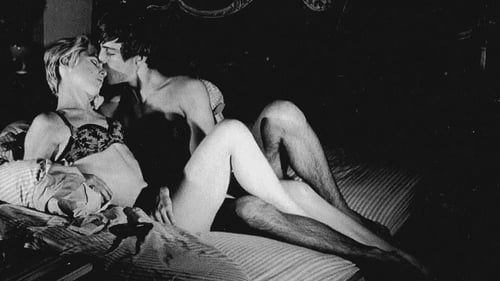
Editor
The movie has a fixed point of view showing a bed with two characters on it, Sedgwick and Piserchio. Chuck Wein is heard speaking but is just out of view. Sedgwick is wearing a lace bra and panties, and Piserchio, wearing only jockey shorts, engage in flirting and light kissing. Wein asks Sedgwick questions seemingly designed to harass and annoy her. Piserchio is more or less a bystander not interacting with Wein. The dialogue seems created adlib and no conclusions are reached in the film. The only conceivable climax is when Sedgwick finally becomes so mad, she throws a glass ashtray at Wein, breaking it.

Director of Photography
The movie has a fixed point of view showing a bed with two characters on it, Sedgwick and Piserchio. Chuck Wein is heard speaking but is just out of view. Sedgwick is wearing a lace bra and panties, and Piserchio, wearing only jockey shorts, engage in flirting and light kissing. Wein asks Sedgwick questions seemingly designed to harass and annoy her. Piserchio is more or less a bystander not interacting with Wein. The dialogue seems created adlib and no conclusions are reached in the film. The only conceivable climax is when Sedgwick finally becomes so mad, she throws a glass ashtray at Wein, breaking it.

Producer
The movie has a fixed point of view showing a bed with two characters on it, Sedgwick and Piserchio. Chuck Wein is heard speaking but is just out of view. Sedgwick is wearing a lace bra and panties, and Piserchio, wearing only jockey shorts, engage in flirting and light kissing. Wein asks Sedgwick questions seemingly designed to harass and annoy her. Piserchio is more or less a bystander not interacting with Wein. The dialogue seems created adlib and no conclusions are reached in the film. The only conceivable climax is when Sedgwick finally becomes so mad, she throws a glass ashtray at Wein, breaking it.

Director
The movie has a fixed point of view showing a bed with two characters on it, Sedgwick and Piserchio. Chuck Wein is heard speaking but is just out of view. Sedgwick is wearing a lace bra and panties, and Piserchio, wearing only jockey shorts, engage in flirting and light kissing. Wein asks Sedgwick questions seemingly designed to harass and annoy her. Piserchio is more or less a bystander not interacting with Wein. The dialogue seems created adlib and no conclusions are reached in the film. The only conceivable climax is when Sedgwick finally becomes so mad, she throws a glass ashtray at Wein, breaking it.

Director
The film begins with a close-up of a table in a restaurant covered with a checkered cloth, in a composition that strongly suggests a still life. It lingers there for a long time before beginning a slow outward zoom. All the while we overhear poorly recorded snippets of conversation. We see hands move in and out of the frame, lifting glasses and tapping cigarettes. We recognise Edie Sedgwick by her signature dancer's tights and jewellery. The group discuss a recent trip to Tangier; the conversation returns frequently to past and upcoming travel. At one point, a whole, uncut pineapple is delivered to their table, despite the fact that they are in an Italian restaurant: it is not meant to be eaten, but to evoke the possibility of adventure in exotic, semi-imaginary lands.

Editor
A young, jobless woman stays in bed, reads, talks on the phone, smokes cigarettes, makes fresh coffee, and tries on some clothes from a large wardrobe.

Director of Photography
A young, jobless woman stays in bed, reads, talks on the phone, smokes cigarettes, makes fresh coffee, and tries on some clothes from a large wardrobe.

Producer
A young, jobless woman stays in bed, reads, talks on the phone, smokes cigarettes, makes fresh coffee, and tries on some clothes from a large wardrobe.

Director
A young, jobless woman stays in bed, reads, talks on the phone, smokes cigarettes, makes fresh coffee, and tries on some clothes from a large wardrobe.

Producer
Ronald Tavel taunts Philip Fagan, who lacks the verbal dexterity to counter the clever spider’s web of words that Ronald Tavel weaves to ensnare him, so that Fagan’s only response is to refuse to respond and stare silently off-screen, turning the screen test into a strange form of psychodrama.

Director
Ronald Tavel taunts Philip Fagan, who lacks the verbal dexterity to counter the clever spider’s web of words that Ronald Tavel weaves to ensnare him, so that Fagan’s only response is to refuse to respond and stare silently off-screen, turning the screen test into a strange form of psychodrama.

Director
Warhol and scenarist Ronald Tavel offer a brutal vision of the Hollywood casting couch with this record of ingenue Mario Montez performing a humiliating auditions for a dictatorial, unseen director.

Editor
Andy Warhol’s screen adaptation of Burgess's "A Clockwork Orange”.

Director of Photography
Andy Warhol’s screen adaptation of Burgess's "A Clockwork Orange”.

Producer
Andy Warhol’s screen adaptation of Burgess's "A Clockwork Orange”.

Director
Andy Warhol’s screen adaptation of Burgess's "A Clockwork Orange”.

Director
Screen Test of Bibbe Hansen at age 15.

Director
A playwright taunts a number of actors into improvising a truly ridiculous but subtlely meaningful meditation on Fidel Castro and his family.
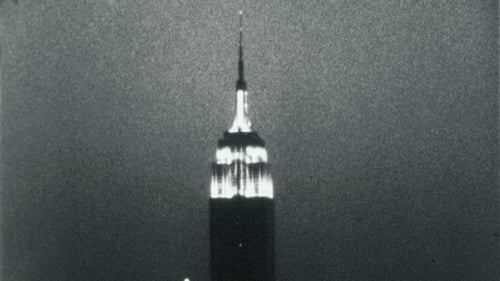
Self (uncredited)
Experimental film consisting of a single static shot of the Empire State Building from early evening until nearly 3 am the next day.

Producer
Experimental film consisting of a single static shot of the Empire State Building from early evening until nearly 3 am the next day.

Director
Experimental film consisting of a single static shot of the Empire State Building from early evening until nearly 3 am the next day.

Director
Bob Dylan's screen test for Andy Warhol, filmed January 23, 1965.

Director
Jean Harlow-lookalike Harlot (Mario Montez), Gerard Malanga, Philip Fagan, and Carol Koshinskie (with a cat) sit in a room eating bananas as the off-screen voices of Billy Name, Ronald Tavel, and Harry Fainlight discuss various topics.
![Screen Test [ST310]: Edie Sedgwick](/assets/images/no-backdrop.png)
Director
Begins with a close-up of Edie Sedgwick powdering her face with a powder puff. She is wearing two different earrings and has been lit harshly from the right. She holds her hand up against the light, laughs, and says something to the camera. The camera then zooms out, showing her seated on a stool.

Director
Inspired by Bibbe Hansen's experiences in a juvenile detention center.

Director
Screen test by Andy Warhol featuring Paul America.

Producer
Andy directs Edie for a screen test.

Director
1965 Andy Warhol film.

Director
Taylor Mead humorously bares his ass for Andy Warhol.

Director
A stationary shot of John Palmer and Ivy Nicholson in this tiny apartment.

Director
Andy Warhol’s two-reel portrait of the dancer once billed as “the most beautiful man in the world.” In 1965, Swan was eighty-two years old and still performing his aesthetic dance routines in weekly salons attended by the likes of Marcel Duchamp and Alexander Calder.

Director
"In January 1965, over drinks at the Russian Tea Room, the documentary filmmaker Emile de Antonio (Point of Order, In the Year of the Pig) warily agreed to collaborate with Warhol on a movie. Believing their politics and art to be absurdly different, De Antonio instead gamely proposed to drink an entire quart of J&B scotch in 20 minutes under the unflinching, voyeuristic gaze of Warhol’s camera. Their Factory session, recorded in this film, instead lasted 66 minutes, its grand finale a reckless and grandiose De Antonio writhing on the floor, clawing the walls, and speaking in tongues." - MoMA

Director
Andy directs Edie for a screen test.

Cinematography
Black-and-white version of Mario Banana I, in which Mario enjoys another banana.

Writer
Black-and-white version of Mario Banana I, in which Mario enjoys another banana.

Cinematography
Mario Montez in drag eats a banana.

Writer
Mario Montez in drag eats a banana.

Producer
Mario Montez in drag eats a banana.

Director

Director
Black-and-white version of Mario Banana I, in which Mario enjoys another banana.

Director
Mario Montez in drag eats a banana.

Director
According to the first volume of the Andy Warhol film cat. rais., the film was probably shot on the same day as Jill Johnston Dancing. In the Stephen Koch filmography, Shoulder is listed as: "16mm, 4 minutes, B/W, silent, 16 fps. Filmed summer, 1964. Lucinda Childs' shoulder."

Director
Inspired by a 1962 NYPD pamphlet entitled ‘The Thirteen Most Wanted [Men]’. Warhol transformed it from ‘most wanted men’ into ‘most beautiful boys’, and then began to film the very first Screen Tests, continuing to film for the series into early 1966, totalling more than 13 Screen Tests.

Director
16mm, black and white film, silent, 4:30 min.

Director
Screen test of Harold Stevenson.

Director
Screen test of Ruth Ford

Director
Screen Test of Alan Soloman
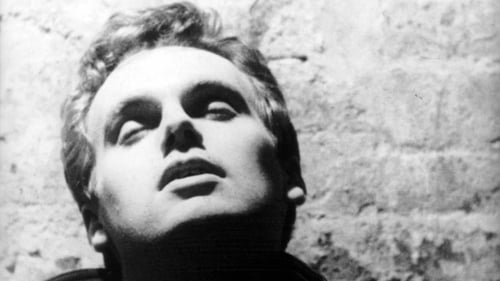
Producer
Andy Warhol directs a single 35-minute shot of a man's face to capture his facial expressions as he receives the sexual act depicted in the title.

Director
This art experiment by Andy Warhol captures the simple act of a man eating mushrooms. This one-man show starring Robert Indiana presents the actor slowly eating some mushrooms, having an enjoyable time not only with the food but also with a friendly cat that from time to time comes to see what the man is doing.

Director
Andy Warhol directs a single 35-minute shot of a man's face to capture his facial expressions as he receives the sexual act depicted in the title.

Producer
Henry Geldzahler is a feature-length underground film directed by Andy Warhol, featuring art curator Henry Geldzahler smoking a cigar and becoming increasingly uncomfortable for 97 minutes. The film was shot silent and in black-and-white in the first week of July 1964, using unused film left from the filming of Empire.

Director
Henry Geldzahler is a feature-length underground film directed by Andy Warhol, featuring art curator Henry Geldzahler smoking a cigar and becoming increasingly uncomfortable for 97 minutes. The film was shot silent and in black-and-white in the first week of July 1964, using unused film left from the filming of Empire.

Producer
Soap Opera, starring Baby Jane Holzer and Lester Persky, among Factory regulars, intercuts television commercials of its day with silent domestic scenes shot by Warhol.

Director
Soap Opera, starring Baby Jane Holzer and Lester Persky, among Factory regulars, intercuts television commercials of its day with silent domestic scenes shot by Warhol.

Director
One of two(?) 1964 screen tests of Linich. Runs 4 minutes, 24 seconds in length.

Director
Susan Sontag was one of the many subjects of Warhol’s Screen Tests, a silent-film portrait series capturing well–known cultural figures of the 1960s. Warhol filmed seven Screen Tests of the journalist and author Sontag in his Factory—a space of collaborative and interdisciplinary artistic production. Of the Sontag films, ST318 is perhaps the most direct and severe. The intricacies of Sontag’s facial features are heightened by the film’s slow–motion progression, stretched out to four minutes and thirty seconds.

Director
Shot in slow motion, with tiny bits of stagy lighting that seem to crumble and flake like cookies, Billy Name gives one of his notorious haircuts--and Warhol turns it into a homoerotic performance, a dance of adoration and control, a triangle of looking and keeping-at-bay, that is a slightly dullish but finally essential contribution to Warhol's long project of bringing portraiture technologies to moviemaking.

Shot during Warhol's cross-county trip to Los Angeles during his second exhibition at the Ferus - the same trip during which he filmed the footage for Elvis at Ferus. Locations included Hollywood, Malibu, Venice, Pasadena, Topanga Canyon, the Santa Monica pier and the Beverly Hills Hotel.

Director
Shot during Warhol's cross-county trip to Los Angeles during his second exhibition at the Ferus - the same trip during which he filmed the footage for Elvis at Ferus. Locations included Hollywood, Malibu, Venice, Pasadena, Topanga Canyon, the Santa Monica pier and the Beverly Hills Hotel.

Director
Footage of John Giorno sleeping for five hours.

Director
1964 screen test of Herko running 4 minutes, 36 seconds in length.

Director
An Andy Warhol film.

Director
In 1963 and 1964, Andy Warhol captured dancer-choreographers Lucinda Childs, Yvonne Rainer, and Freddy Herko, and Village Voice dance critic Jill Johnston with his Bolex—performing in lofts, on rooftops, and at Judson.

Director
Reel 24, Test #9

Director
Reel 24, Test #8
![Screen Test [ST292]: Niki de Saint Phalle](/assets/images/no-backdrop.png)
Director
The artist and sculptor Niki de Saint Phalle is filmed against the sparkly background of the Factory. She looks elegant, solemn, and slightly sad. Her large-eyed gaze seems to avoid direct engagement with the camera; towards the end of the roll, she strokes her chin pensively.

Self
This compilation of Gerard Malanga's short films consists of a collection of extremely rare footage and film portraits providing candid and interesting glimpses of Bob Dylan, Salvador Dalí, Jane Fonda and The Velvet Underground among other 1960s icons and featuring original music by Angus MacLise, who was the first drummer to perform with The Velvet Underground.

Director
Ann follows Warhol's instructions throughout the entire screen test, as she stares directly at the camera without blinking, until tears begin to fall first from her left eye, and then from her right eye.

Director
Billy Name screen test by Andy Warhol.

Director
Screen test by Andy Warhol with Dennis Hopper as the subject.

Director
Model and superstar "Baby Jane" Holzer brushes her teeth for over 4 minutes in a mesmerizing Andy Warhol screen test at the Factory in New York City.

Director
Part of Andy Warhol's Screen Tests series. Filmmaker and performance artist Jack Smith.

Director
Part of Andy Warhol's Screen Tests series.
![Screen Test [ST52]: Lucinda Childs](/assets/images/no-backdrop.png)
Director
Lucinda Childs, framed in tight close-up, holds completely still and fixes the camera with a determined stare, frowning slightly.

Director
Batman Dracula is a 1964 black and white American film produced and directed by Andy Warhol, without the permission of DC Comics. The film was screened only at Warhol's art exhibits. A fan of the Batman series, Warhol made the movie as a homage. Batman Dracula is considered to be the first film featuring a blatantly campy Batman. The film was thought to have been lost until scenes from it were shown at some length in the documentary Jack Smith and the Destruction of Atlantis.

Director
The couch at Andy Warhol's Factory was as famous in its own right as any of his Superstars. In Couch, visitors to the Factory were invited to "perform" on camera, seated on the old couch. Their many acts-both lascivious and mundane-are documented in a film that has come to be regarded as one of the most notorious of Warhol's early works. Across the course of the film we encounter such figures as poets Allen Ginsberg and Gregory Corso, the writer Jack Kerouac, and perennial New York figure Taylor Mead.

Cinematography
An hour-long paean to the art of the kiss featuring fourteen couples, from passionate participants to lethargic lovers, engaging in the intimate act.

Producer
An hour-long paean to the art of the kiss featuring fourteen couples, from passionate participants to lethargic lovers, engaging in the intimate act.

Director
An hour-long paean to the art of the kiss featuring fourteen couples, from passionate participants to lethargic lovers, engaging in the intimate act.

Producer
Against a backdrop of the Manhattan skyline, Judson Dance Theater company member Freddy Herko and author and cultural critic Jill Johnston dance together on Wynn Chamberlain’s rooftop.

Editor
Against a backdrop of the Manhattan skyline, Judson Dance Theater company member Freddy Herko and author and cultural critic Jill Johnston dance together on Wynn Chamberlain’s rooftop.

Director of Photography
Against a backdrop of the Manhattan skyline, Judson Dance Theater company member Freddy Herko and author and cultural critic Jill Johnston dance together on Wynn Chamberlain’s rooftop.

Director
Against a backdrop of the Manhattan skyline, Judson Dance Theater company member Freddy Herko and author and cultural critic Jill Johnston dance together on Wynn Chamberlain’s rooftop.

Director
Robert Indiana with a few companions sitting, smiling, and smoking as life passes idly by.

Cinematography
A short documenting Andy Warhol’s exhibition of silk-screened Elvis paintings at the Ferus Gallery in Los Angeles. As Warhol spins around with his camera, multiple Elvises seem to march across the screen.

Director
A short documenting Andy Warhol’s exhibition of silk-screened Elvis paintings at the Ferus Gallery in Los Angeles. As Warhol spins around with his camera, multiple Elvises seem to march across the screen.

Director
Andy Warhol film.

Director
Andy Warhol film.

Director
Lost Andy Warhol film.

Director
Poet and artist John Giorno washes dishes in the buff.

Director
An Andy Warhol short film
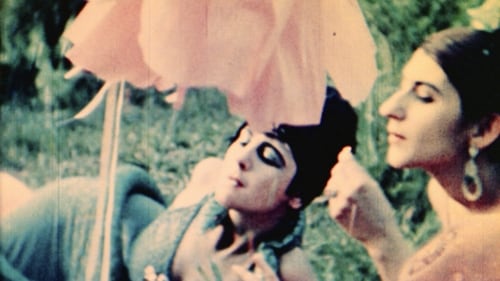
The feature length Normal Love is Jack Smith’s follow up to his now legendary film Flaming Creatures. This vivid, full-color homage to B-movies is a dizzying display of camp that clearly affirms Smith’s role as the driving force behind underground cinema and performance art of the post-war era. The cast includes Mario Montez, Diane de Prima, Tiny Tim, Francis Francine, Beverley Grant and John Vaccaro. Smith was known to constantly re-edit the film, often during screenings as it was still unspooling from the projector. This print has been restored under the supervision of Jerry Tartaglia and is provided by Filmmakers Co-operative in New York City.
![SCREEN TEST [ST195]: DONYALE LUNA](/assets/images/no-backdrop.png)
Director
Luna appears in one of Warhol’s famous screen tests. Contrary to Warhol’s preferred stasis, she acknowledges the camera with a series of smiles, winks, and suggestive facial expressions.

Director
Henry Geldazhler was the first curator of 20th-century art at the Metropolitan Museum of Art, and during the early 1960s, was a close friend and confidante of Warhol.

Director
Marisol has been posed against a light-coloured background and carefully lit from left and right. Her face emerges from the dark mass of her hair. The film is slightly out of focus throughout. At one point she glances off-screen, then resumes her gaze into the camera.

Director
Captures the sculptor Marisol posing among her work.
![Screen Test [ST194]: Billy Linich](/assets/images/no-backdrop.png)
Director
One of two(?) 1964 screen tests of Linich. Runs 4 minutes, 30 seconds in length.

Director
One of two(?) 1964 screen tests of Childs. Runs 4 minutes, 30 seconds in length.
